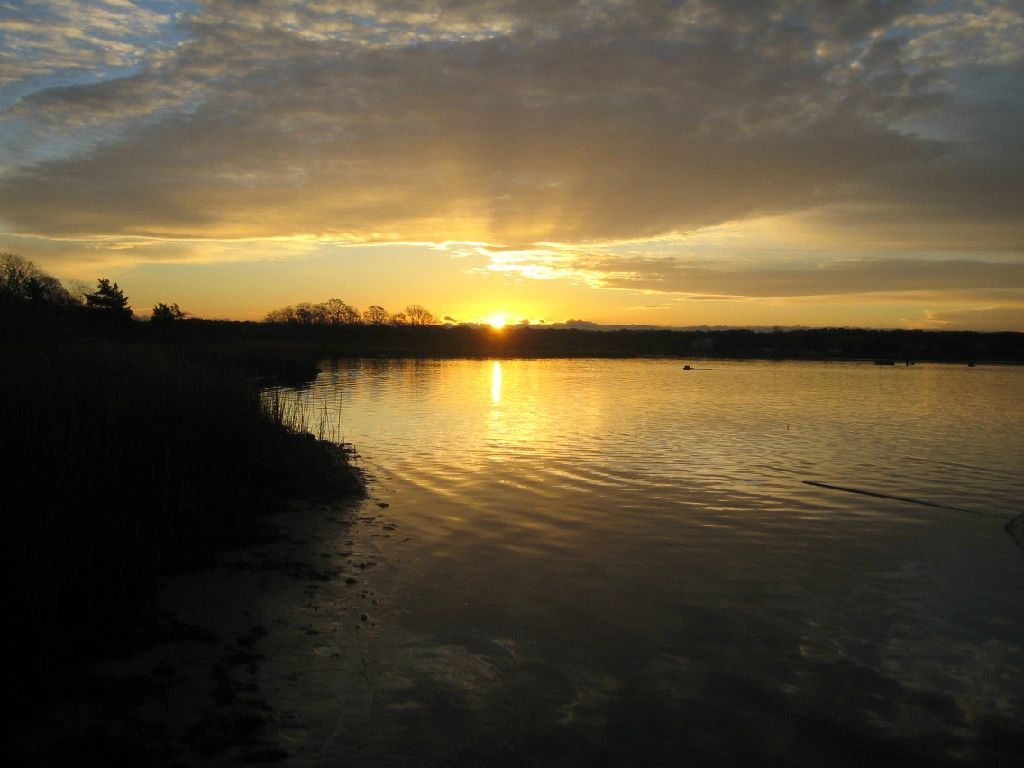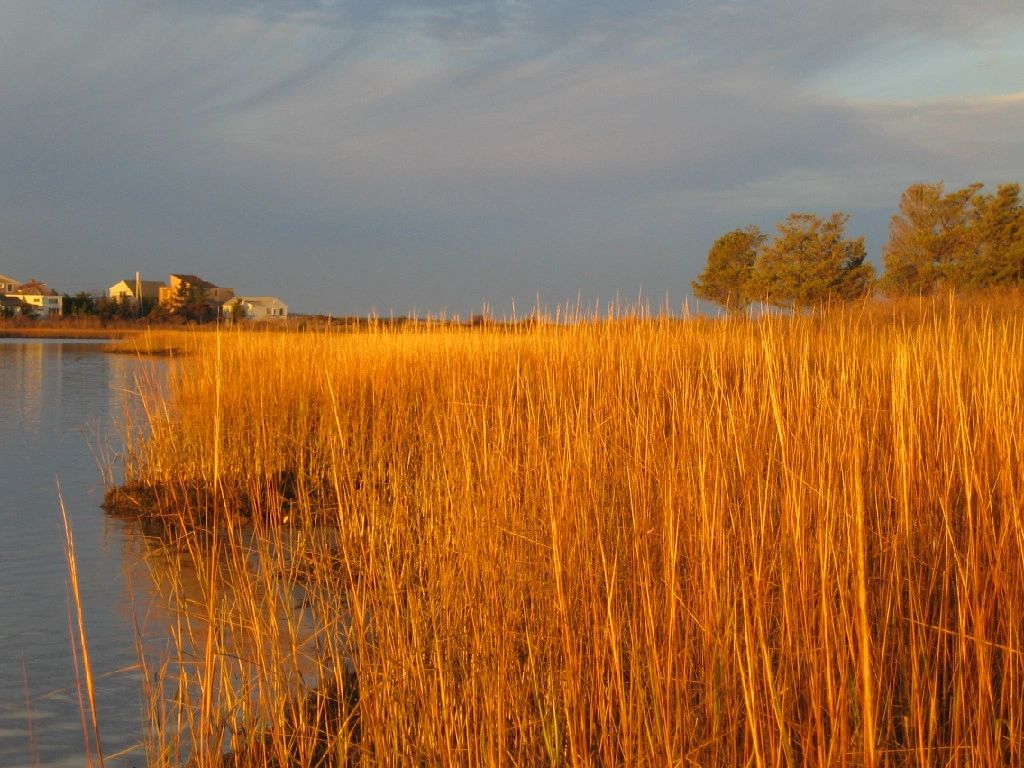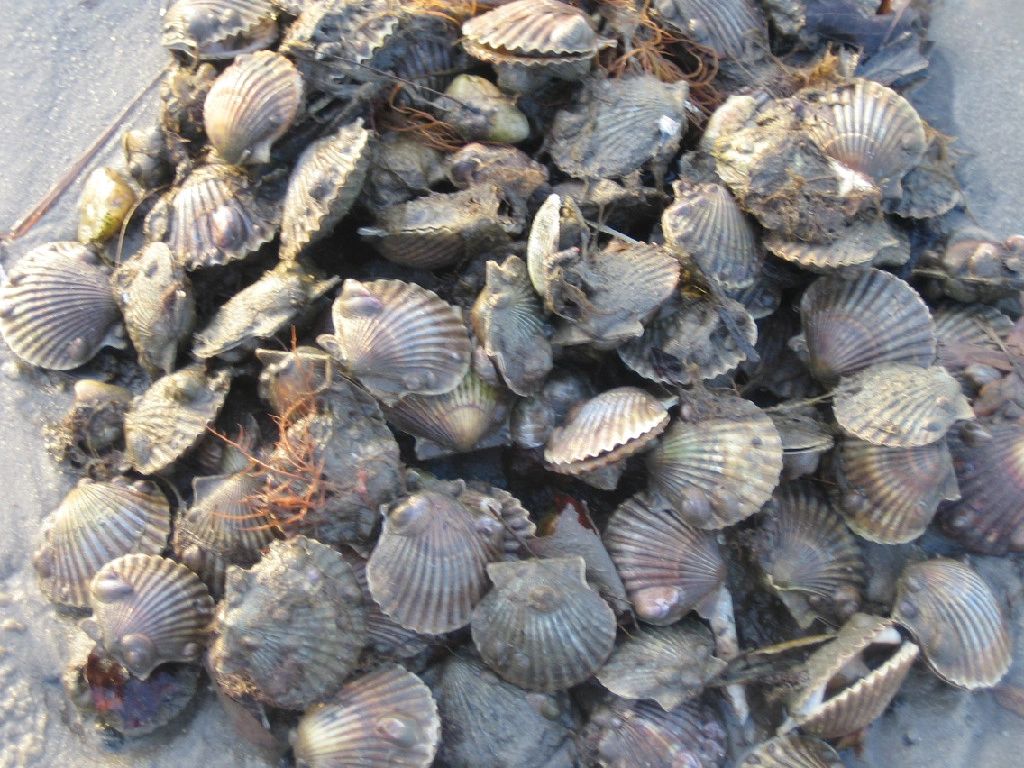YourPotluck.com Living & Eating on Long Island's East End
Excursions: Scalloping: Shucking for my dinner

My name is Monique.
I'm a 2-time Emmy Award winning TV Producer.
Having been in the business for over 15 years I've produced my share of live tv cooking segments, but never had much time to devote to cooking myself.
Last year when I got married, I moved out of New York City to the east end of Long Island, to ...wait for it...The Hamptons.
Now before you roll your eyes, there's more to the Hamptons than mansions and celebrities.
The Hamptons have some of the most beautiful beaches in the world, miles of productive farmland, plus a rich clamming history that continues to this day.
When I moved out east and realized I was surrounded, not just by the bounty of the sea, but also local farms and vineyards, I couldn't wait to explore and sample my new environment.
That's what this blog is about. Cooking, living, exploring and sharing those experiences.
You'll notice that my blog is a little of this and a little of that, kind of like a potluck meal.
Thanks for visiting my blog
Recipe Index:
Applesauce
Barbecue Sauce
Beach Plum Jelly
Bluebarb Pie
Blueberry Pancakes
Chocolate Bread Pudding
Edible Flowers
Heirloom Tomatoes
Maple Snow Cones
Marmalade
Mussels in White Wine
Nicoise Salad
Omelettes
Peasant Bread
Pesto/Pistou
Rasberry Rhubarb Crumble
Sea Robins
Stick To Your Ribs Ribs
Swedish Saffron Buns
Tate's Chocolate Chip Cookie
Venison Stew
Vintage Recipes:
Clam Pie
Corned Pork & Cabbage
Mullein
Old East Hampton Cake
Smoked Eel
From The Garden:
Bok Choy Flowers
Radish Leaves
Zucchini Corn Bread
Excursions:
Animal Rehab
Beer Tasting
The Big Duck
Camp Hero
Camp Upton
Clambake
Dead Whale
Food Trucks
Hamptons Witch Trial
Historic Southampton
Mecox Cut is Open
Mushroom Picking
Scalloping
Seal Release
Shinnecock Nation
Tall Ships
Tractor Show
The Witch's Hat
Nature:
Rhododendrons
Recipe Index:
Applesauce
Barbecue Sauce
Beach Plum Jelly
Bluebarb Pie
Blueberry Pancakes
Chocolate Bread Pudding
Edible Flowers
Heirloom Tomatoes
Maple Snow Cones
Marmalade
Mussels in White Wine
Nicoise Salad
Omelettes
Peasant Bread
Pesto/Pistou
Rasberry Rhubarb Crumble
Sea Robins
Stick To Your Ribs Ribs
Swedish Saffron Buns
Tate's Chocolate Chip Cookie
Venison Stew
Vintage Recipes:
Clam Pie
Corned Pork & Cabbage
Mullein
Old East Hampton Cake
Smoked Eel
From The Garden:
Bok Choy Flowers
Radish Leaves
Zucchini Corn Bread
Excursions:
Animal Rehab
Beer Tasting
The Big Duck
Camp Hero
Camp Upton
Clambake
Dead Whale
Food Trucks
Hamptons Witch Trial
Historic Southampton
Mecox Cut is Open
Mushroom Picking
Scalloping
Seal Release
Shinnecock Nation
Tall Ships
Tractor Show
The Witch's Hat
Nature:
Rhododendrons

When you think of fishing on Long Island, Montauk is what usually comes to mind, but there are easier ways of catching a seafood dinner, without having to get on a boat.
Do as the locals do; Go scalloping.
Long Island's east end not only supports a thriving clamming industry, but Long Island Bay Scallops are prized for their lighter taste and are considered more tender then sea scallops.
For instance, scalloping in Southampton is only allowed from November 1st to March 31st, because by then they've finished their breeding period and die off by the Spring.
As scallop season approached this year, I decided that I wanted to give it a try. My husband is already a veteran clammer/scalloper, since he's been a Hamptons resident most of his life. So on day one, November 1st, we hit Southampton's Cold Spring Pond to try our luck.
Cold Spring Pond is a 100-acre salt water pond. About a quarter of the shoreline is dotted with cape cod-style houses, the rest is open, town protected land.

We arrive at the pond at 6:30 AM. It's a cold, crisp morning. The light is still grey, as the sun hasn't fully risen yet. Cars and trucks are already parked along the side of the road, while a Bay Constable sits in his police car across the street. He's there to make sure everyone only takes their daily allotment of scallops.
We carry our clam rake and large plastic bucket along a leafy path through some woods, which open up to reveal the water's edge. My husband is already wearing his waders and the bucket is fitted into a rubber inner tube that floats. He ties a rope to it, so he can pull it along in the water without having to hold it. Then he quietly slips into the water and walks out about waist deep and begins poking around with the rake.
I'm wearing my Wellington boots, so I can scour the shallows for any scallops that may have washed ashore.
The sun has not hit the horizon yet, so there's a blue light to everything. About half a dozen small boats are already out on
the water, each with two or three men in them. These are the commercial clammers. They are scalloping from their boats, using longer, wider rakes.
the water, each with two or three men in them. These are the commercial clammers. They are scalloping from their boats, using longer, wider rakes.
The water is so still, the surface is like a mirror. The boats float around each other, the men's voices muffled, as they carry over the water towards me.

Also in the water are two men, covered head to toe wearing
wet suits. They are snorkeling in the shallower part of the pond,
wet suits. They are snorkeling in the shallower part of the pond,
where it's about three to four feet deep. As they swim, they dip their heads underwater, reaching along the bottom of the pond
floor, scooping up scallops with one hand. Their other hand holds onto their large bucket floating in an inner tube.
Every now and then they surface with a large gasp of air, like a
small breaching whale, to put another handful of scallops into
their buckets.
As if that isn't strange enough, another pair of men are doing something even more unusual. They are wearing waders and
These are lookboxes. About the size of a 17-inch TV set, the lookbox is made of wood and floats on the water, as the
As the men push their lookboxes forward with one hand, they fish into the water with the other, using large fishing nets that look like butterfly nets, scooping up scallops. Following behind them, tied to their waists, come the ubiquitous floating plastic buckets.

Sunrise on Southampton's Cold Spring Pond


scalloper looks through it's glass bottom window to observe the pond floor. The lookbox helps to block the sun's glare and
water ripples, allowing the viewer a clear view of the bottom.
My husband is still wading in waist deep water, raking the bottom of the pond with his clam rake. A clam rake looks like a leaf rake with a basket attached to it, with harder and longer metal teeth. The metal teeth scratch along the pond bottom, raking up whatever is loose. Scallops don't burrow into the sand like clams, they sit on the sea floor, so they are very easy to
rake.

Sunrise on Southampton's Cold Spring Pond
Finally the sun comes up, rising over the horizon and peeking over the trees. It bathes the pond, the boats and surrounding
shoreline in a rich, golden light. The reeds growing along the shore look like spun gold and the houses along the water are
also bathed in a beautiful gold tone, making them look like majestic waterfront mansions, which most of them are.

I can now see the bottom of the pond much better and realize
there are scallops directly at my feet. I begin walking alongside
the sandy beach, in ankle deep water. One by one, I reach down and gather up the treasures.
there are scallops directly at my feet. I begin walking alongside
the sandy beach, in ankle deep water. One by one, I reach down and gather up the treasures.
The water feels like ice, as I reach in and grab each scallop. Some are quiet in my hands, while others twitch and gasp, as
I pull them from the water. Their shells are familiar, they look just like the Shell Oil shell symbol, but what takes getting used
to are the many eyes that line the outer rim of the shell.
Scallops have as many as 100 eyes that circle around the edge
Scallops have as many as 100 eyes that circle around the edge
of their shell, like a string of beads. The consumer never sees this because the muscle of the scallop is all that they see on
their dinner plate.
By the time I've made a small pile of scallops on the beach,
my husband is making his way back to shore with his bucket
my husband is making his way back to shore with his bucket
nearly filled with scallops. I add mine to the batch, together we've got nearly three quarters of a bushel.
Not bad for an early morning's work.


